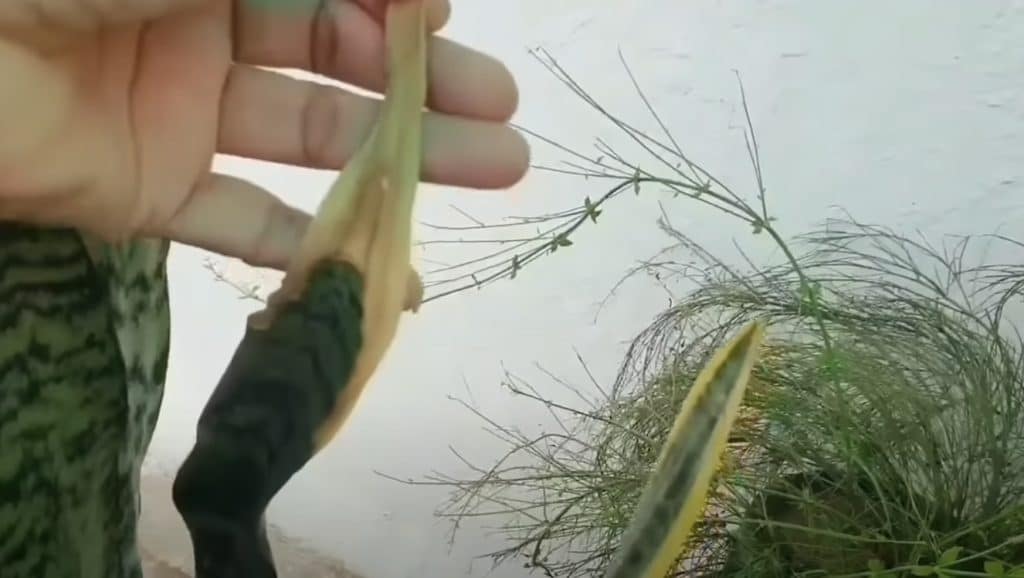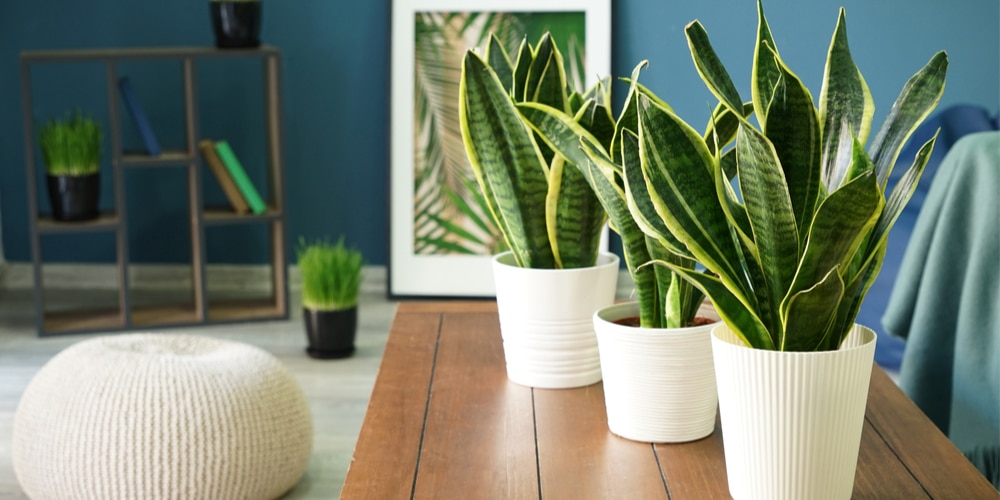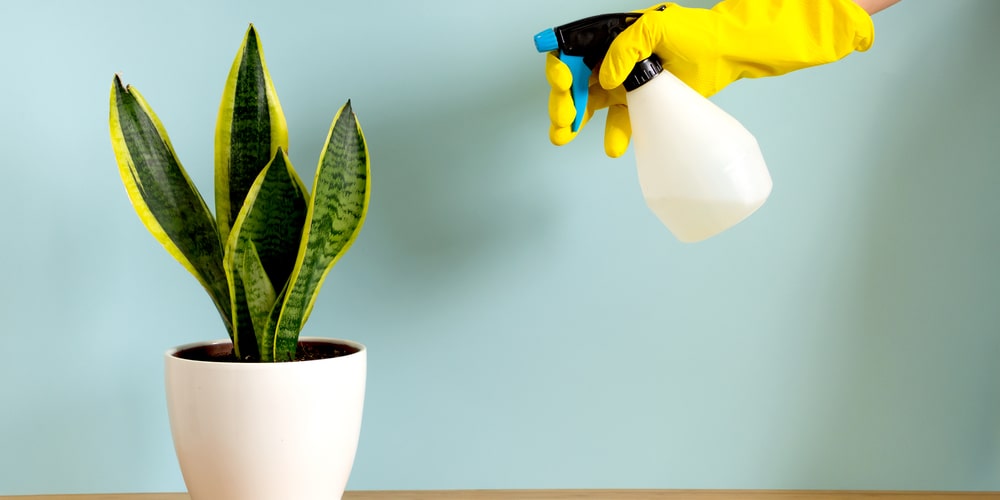It’s important not to overwater your snake plant (Sansevieri), as overwatering may kill it. If your snake plant is overwatered or underwatered, there’s plenty you can do to save it. Let’s look at how to water a snake plant; we’ll also discuss the symptoms of an overwatered and underwatered snake plant.
The snake plant is a common succulent that’s often referred to as the Mother-in-Law’s tongue, St Georges sword, tiger tail, and cow’s tongue. Its scientific name is Sansevieri, and this plant has long, sharp leaves and mottled skin like a snake.
Snake plants can retain water, and as they originate from tropical areas in West Africa are used to dry conditions. These plants are very resilient and drought tolerant. They can survive for extended periods of dryness, which makes them very easy to care for.
Watering a Snake Plant

When watering a snake plant, be careful not to get any water on the leaves, as this can cause the plant to rot. Snake plants don’t require much water as they thrive in dry conditions; it’s best to water your plant once every two to four weeks. The amount of water your plant needs will vary depending on the season and climate, as well as how much heat and light it’s exposed to.
It’s best to water a snake plant sparingly in small amounts rather than drenching the plant. You can reduce the frequency of watering in the winter, but don’t neglect your succulent and underwater it. Water once a month so that you don’t end up with an underwatered snake plant. Before watering your snake plant, it’s a good idea to check that the top inch of soil has dried out. This will help to prevent overwatering.
Overwatered Snake Plant Symptoms
One of the most common signs of an overwatered snake plant is that the leaves will look and feel slimy. This is because they have absorbed too much water. There may also be water blisters on the plant’s skin surface, and the soil will feel soggy. Your snake plant may have started to rot or grow fungus if you’ve got water on the leaves while watering. There may also be mold growing on the surface of the soil.
Over-watering a snake plant is very common. When the plant is left sitting in soggy soil, its roots will begin to rot, and your plant may have a foul, stagnant smell. Over-watering can also cause the leaves to turn yellow; eventually, they will become brown. They will also feel soft and be mushy around the base.
The above signs indicate that your plant has been sitting in soggy soil for a while. If you think you’ve recently overwatered your plant, but the signs haven’t started to show, you can do a finger test. Push your finger into the soil, to about two inches, to feel how wet the soil is. If it feels very moist, you should stop watering your plant and let it dry out to save it.
Recovering from Overwatering
If you’ve overwatered your snake plant, you may be able to save it by removing it from its pot. Then prise all the wet soil out from between the roots, be very gentle when doing this job. Next, take a clean, sharp knife and cut off any roots that feel soggy or look black as these are affected by root rot. Use a sharp, clean knife or scissors to remove affected roots.
You can then treat your snake plant’s roots using a fungicide and repot it using new soil. Don’t reuse the same soil as it will be too wet and will contain fungal spores, which may re affect your plant. Snake plants naturally grow in areas dry areas with soil that’s sandy. Sandy soils are able to drain faster, and water won’t be left sitting next to the plant’s roots.
When repotting your snake plant, it’s best to use potting soil that’s fast-draining, such as a cactus and succulent premix. Alternatively, use a house plant potting soil and add some sand or perlite.
You should also use a new pot and ensure the pot has holes in the bottom to allow excess water to seep away. It’s also a good idea to put a layer of stones or gravel in the bottom of your pot to help with drainage. Snake plants are best grown in terracotta pots. Terracotta is a very porous material, which means that air can pass through the pot. This keeps the soil aerated and dries out the soil, improving the health of your snake plant.
Underwatered Symptoms
An underwatered snake plant will have wrinkled leaves and a dehydrated appearance. The plant’s leaves may look thinner than usual. While it’s better to underwater than overwater your snake plant, it’s worth remembering that a snake plant is not a cactus and requires regular watering.
Snake plants can continue to thrive even if they’ve been neglected for a while. If you’re away from home for a month or six weeks, your plant will survive. Just don’t forget to give your plant some water when you get home, and then resume a regular watering schedule.
Related: Jade Plant Watering Guide
Conclusion
Snake plants or mother in laws tongues are popular succulents that are easy to care for. They look great in any home and help to purify the air, producing oxygen at night, making them an excellent choice for offices.
Be careful not to overwater your snake plant, or it will suffer from root rot and fungal infections. You can save an overwatered snake plant if you catch it before root rot becomes a problem.
Snake plants originate from dry areas of West Africa, so they don’t need too much water. Due to their origins, they can survive being underwatered for a while as they are drought resistant. Therefore, the snake plant is a great choice for anyone who travels often and is likely to be away from home for a while as this plant will survive.


